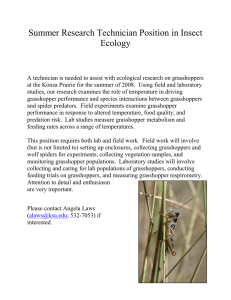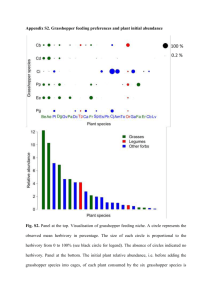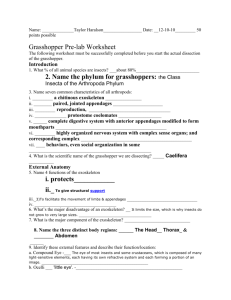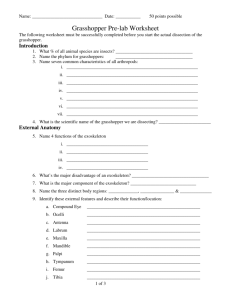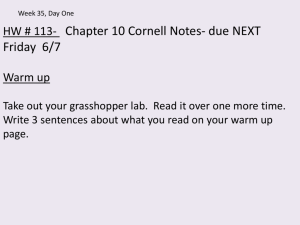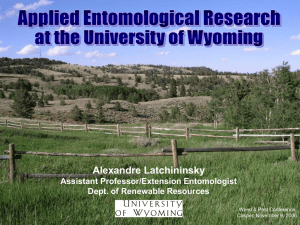Grasshoppers in the Garden
advertisement
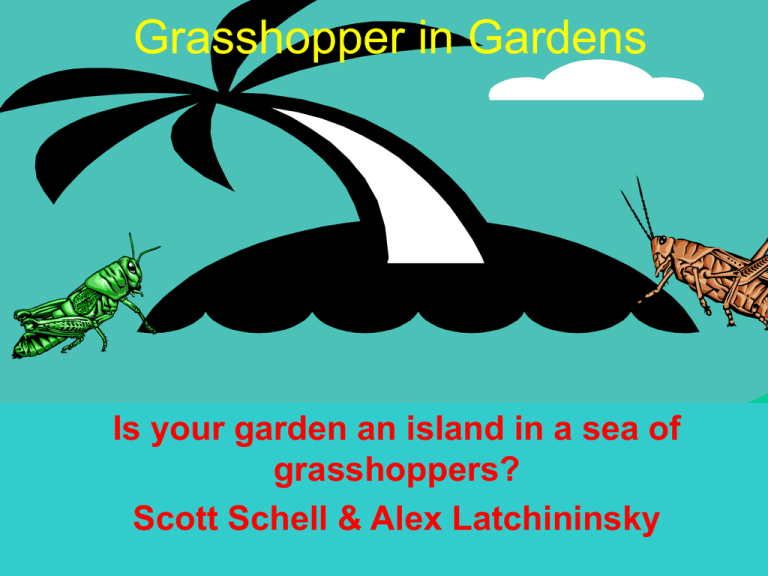
Grasshopper in Gardens Is your garden an island in a sea of grasshoppers? Scott Schell & Alex Latchininsky Twostriped grasshopper (Melanoplus bivittatus) is a frequent culprit. Twostriped grasshopper facts • Peak hatch May 15 to June 15 (extended hatch - 30 to 40 days) • Eats many types of plants, prefer forbs and legumes • Prolific, single egg pod holds 50 to 100 eggs • Adults capable of flight and short migration • Nymph to adult in 40 days (hot weather) You need to treat the nymphs When they hatch they are the size of long grain rice Products Available: • Organic - Nosema locustae (Semaspore, Nolo bait, and other brands) • Single celled grasshopper disease organism is active ingredient • Has a short shelf life when applied to wheat bran • Grasshopper suppression, not control • Treat early and often where they hatch Products Available • Chemical – carbaryl (Sevin), malathion, some pyrethroids labeled for garden • Bait (various substrates) with carbaryl are effective, reduces the amount of pesticide needed by 90% • Twostriped grasshopper bait susceptible • Still treat early and often where they hatch. Light sprinkles good coverage – not piles here and there. Reversing the Research: The Search for a Repellent Potential Grasshopper Repellents Agent Ingredient Claim(s) Effect Azadirachtin neem extract insects repellent Deer Guard Garlic Barrier Hot Pepper Wax Pinene bitrex garlic extract capsaicin alpha pinene deer insects/gh insects insects? none none none none Ropel bitrex/thymol rodent/bird none Use of Neem as a Grasshopper Repellent • Insufficient data to recommend any compound as a reliable repellent of grasshoppers. • Only neem has demonstrated the potential for repellency in laboratory trials. • Biological activity found at 0.001%, which is similar to rates attained with commercially available extracts. • Requires repeat applications through season.
